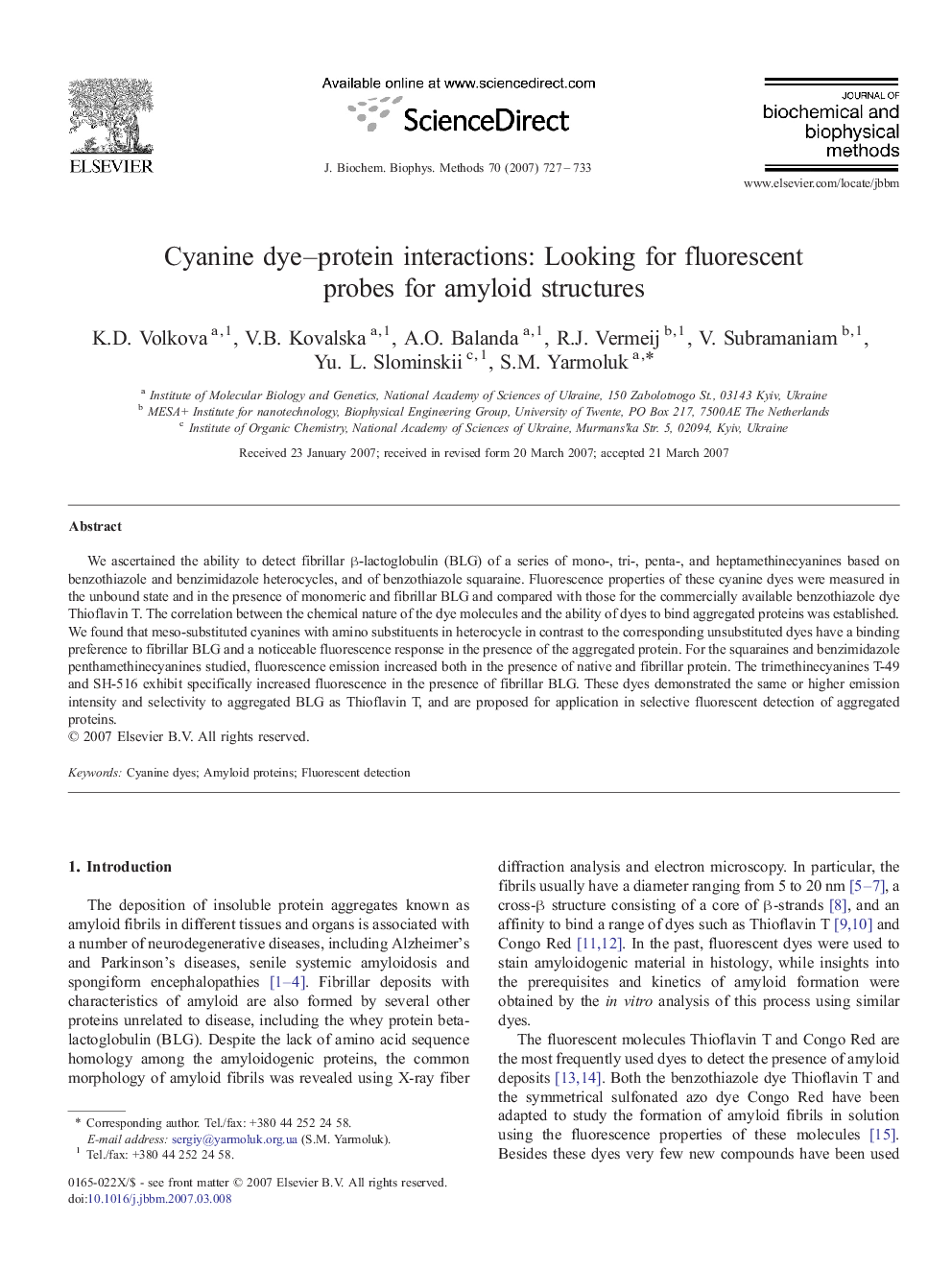| Article ID | Journal | Published Year | Pages | File Type |
|---|---|---|---|---|
| 1988438 | Journal of Biochemical and Biophysical Methods | 2007 | 7 Pages |
Abstract
We ascertained the ability to detect fibrillar β-lactoglobulin (BLG) of a series of mono-, tri-, penta-, and heptamethinecyanines based on benzothiazole and benzimidazole heterocycles, and of benzothiazole squaraine. Fluorescence properties of these cyanine dyes were measured in the unbound state and in the presence of monomeric and fibrillar BLG and compared with those for the commercially available benzothiazole dye Thioflavin T. The correlation between the chemical nature of the dye molecules and the ability of dyes to bind aggregated proteins was established. We found that meso-substituted cyanines with amino substituents in heterocycle in contrast to the corresponding unsubstituted dyes have a binding preference to fibrillar BLG and a noticeable fluorescence response in the presence of the aggregated protein. For the squaraines and benzimidazole penthamethinecyanines studied, fluorescence emission increased both in the presence of native and fibrillar protein. The trimethinecyanines T-49 and SH-516 exhibit specifically increased fluorescence in the presence of fibrillar BLG. These dyes demonstrated the same or higher emission intensity and selectivity to aggregated BLG as Thioflavin T, and are proposed for application in selective fluorescent detection of aggregated proteins.
Related Topics
Life Sciences
Biochemistry, Genetics and Molecular Biology
Biochemistry
Authors
K.D. Volkova, V.B. Kovalska, A.O. Balanda, R.J. Vermeij, V. Subramaniam, Yu. L. Slominskii, S.M. Yarmoluk,
